It continued to be minted and circulated down to the time of Hadrian, long after the kingdom was bequeathed to Rome. It owes its name to a figure, on the obverse, of the sacred chest (cista) of Dionysus.
It was tariffed at four drachmas, but weighed only as much as three Attic drachmas (the most important weight standard of the time), 12.75 grams. In addition, the evidence of hoards suggests that it did not travel outside the area which Pergamum controlled. It is therefore suspected that it was overvalued in this area.
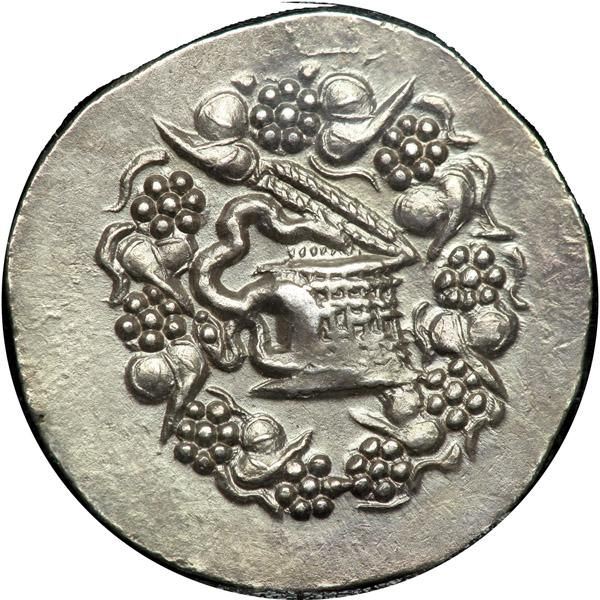
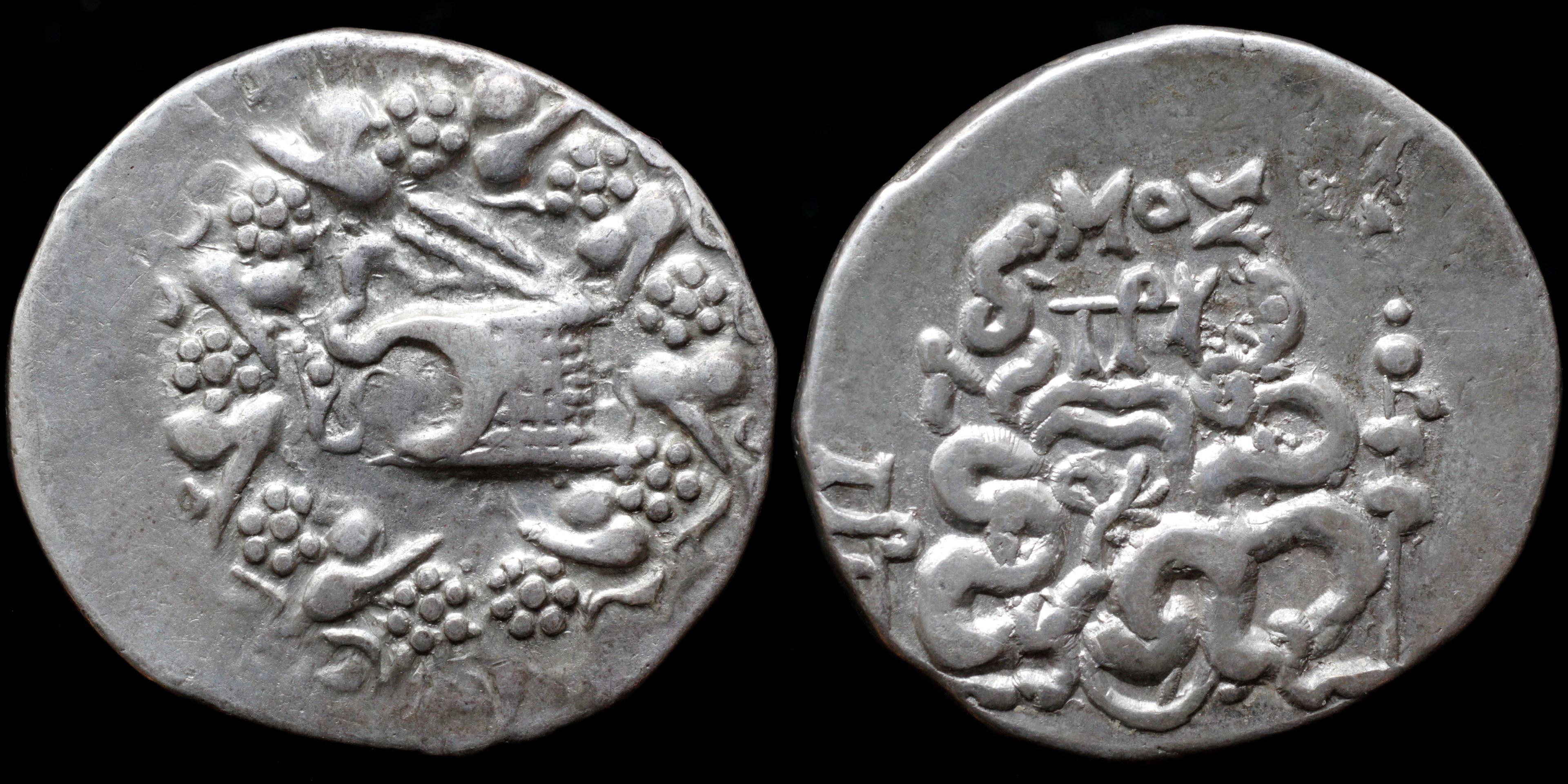
Reverse: coiled snakes, flanking ornamented bow-case, thyrsos right; MOΣ / (ΠYP) / (ΠEP)
Die Orientation: -
Weight: 12.3 g
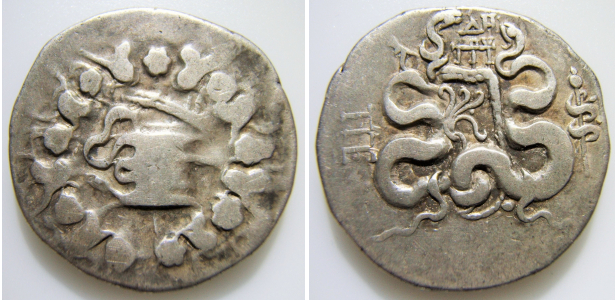
Reverse: ΩΠΓΡ / ΔH - ΩΠΓY - ΩΠΓΡ (Perganom) monogram to left of two serpents entwined around bow and bowcase. ΔH over ΩΠΓY monogram above, serpent-entwined thyrsos in right field.
Die Orientation: 11 H
Weight: 12.35 g
Ex Roma Numismatics Limited 26.08.2017. Added onto the Wildwinds Site.
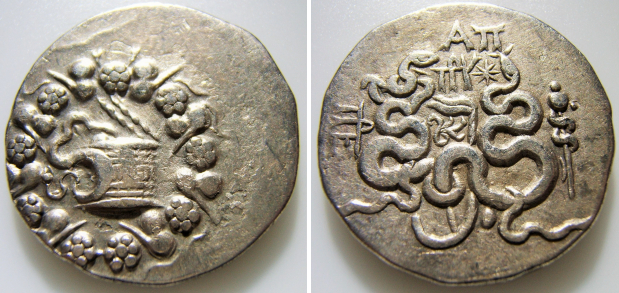
Reverse: ΠEΡΓ / AΠ / ΠΡY * - Two serpents entwined around a bow in bowcase. ΠEΡΓ monogram to left, magistrate's initials AΠ over ΠΡY monogram and star above, serpent-entwined thyrsos in right field.
Die Orientation: 12 H
Weight: 12.01 g
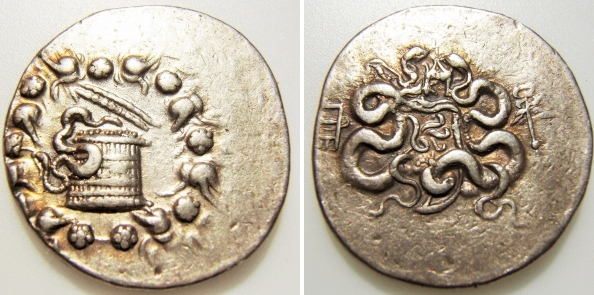
Reverse: Two coiled serpents with heads erect, between them a bow case, ornamented with an aplustre, containing a strung bow, in field to right a winged caduceus, ΠEΡ city monogram to left, and monogram between serpent heads.
Die Orientation: 12 H
Weight: 12.47 g
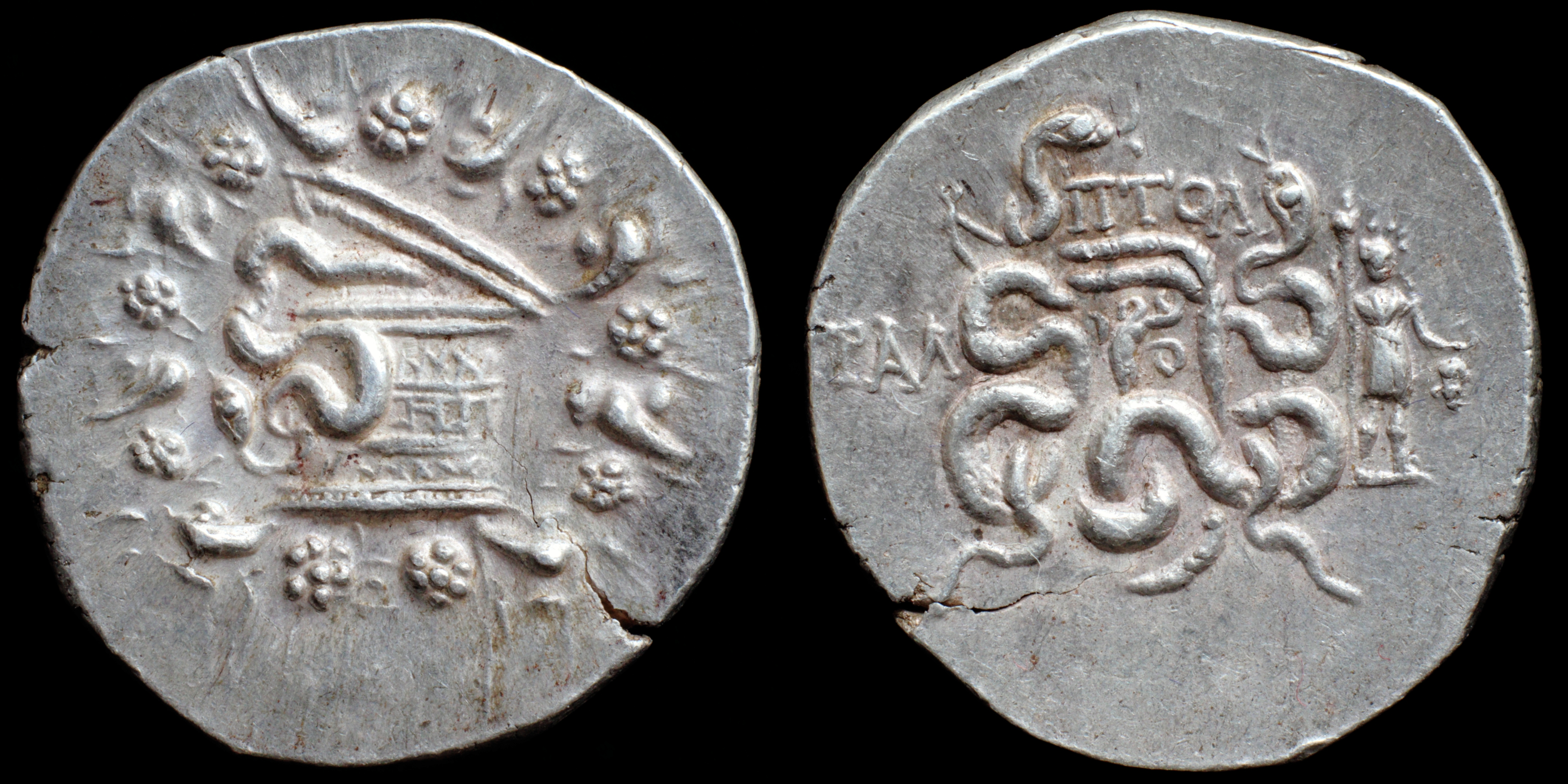
Reverse: coiled snakes, flanking ornamented bow-case; Dionysos on the right, holding thyrsos and grapes; TPAΛ / ΠTOΛ
Die Orientation: -
Weight: 12.8 g
